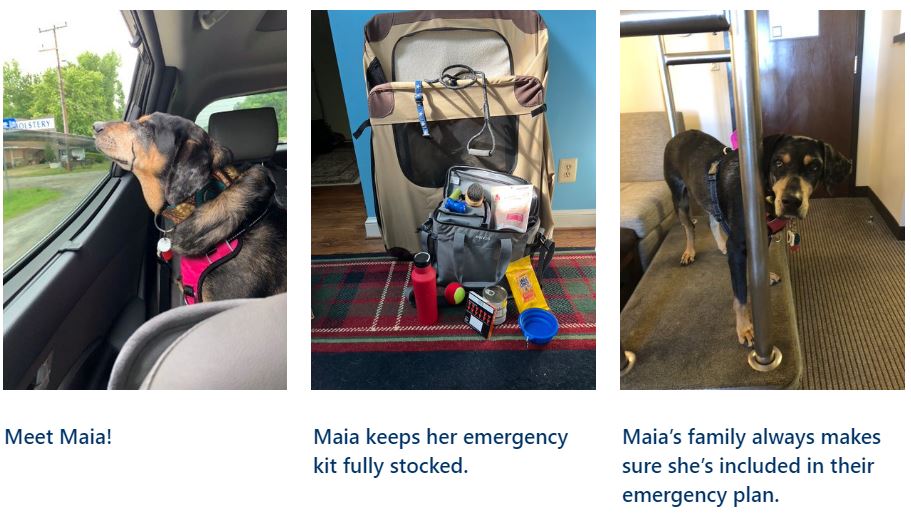
June is Pet Preparedness Month. Your pets are an important part of your family and they rely on you to keep them safe.
You may have to evacuate quickly or may be separated from them when something happens. By making a plan to prepare your pets for disasters, you can prevent having to make impossible decisions about your beloved pet and can give them their best chance of staying safe during and after a disaster.
Things to consider when making a plan:
- Have an evacuation plan for your pet. Many public shelters and hotels do not allow pets inside. Know a safe place where you can take your pets before disasters and emergencies happen.
- Develop a buddy system. Plan with neighbors, friends or relatives to make sure that someone is available to care for or evacuate your pets if you are unable to do so.
- Have your pet microchipped. Make sure to keep your address and phone number up-to-date and include contact information for an emergency contact outside of your immediate area.
- Contact your local emergency management office, animal shelter or animal control office to get additional advice and information if you’re unsure how to care for your pet in case of an emergency.
Keep that plan, and what you need for your pet’s care in an emergency kit tailored specifically to their needs. Here are the top 10 items recommended for your kit:
- Food. Keep several days’ supply of food in an airtight, waterproof container.
- Water. Store a water bowl and several days’ supply of water.
- Medicine. Keep an extra supply of the medicine your pet takes on a regular basis in a waterproof container.
- First aid kit. Talk to your veterinarian about what is most appropriate for your pet’s emergency medical needs.
- Collar with ID tag and a harness or leash. Include a backup leash, collar and ID tag. Have copies of your pet’s registration information and other relevant documents in a waterproof container and available electronically.
- Traveling bag, crate or sturdy carrier, ideally one for each pet.
- Grooming items. Pet shampoo, wipes formulated for your specific pet’s needs and other items, in case they needs some cleaning up.
- Sanitation needs. Include pet litter and litter box (if appropriate), newspapers, paper towels, plastic trash bags and household chlorine bleach to provide for your pet’s sanitation needs.
- A picture of you and your pet together. If you become separated from your pet during an emergency, a picture of you and your pet together will help you document ownership and allow others to assist you in identifying your pet.
- Familiar items. Put favorite toys, treats or bedding in your kit. Familiar items can help reduce stress for your pet.
Visit the Ready.gov Pets and Animals Preparedness page for more information.

